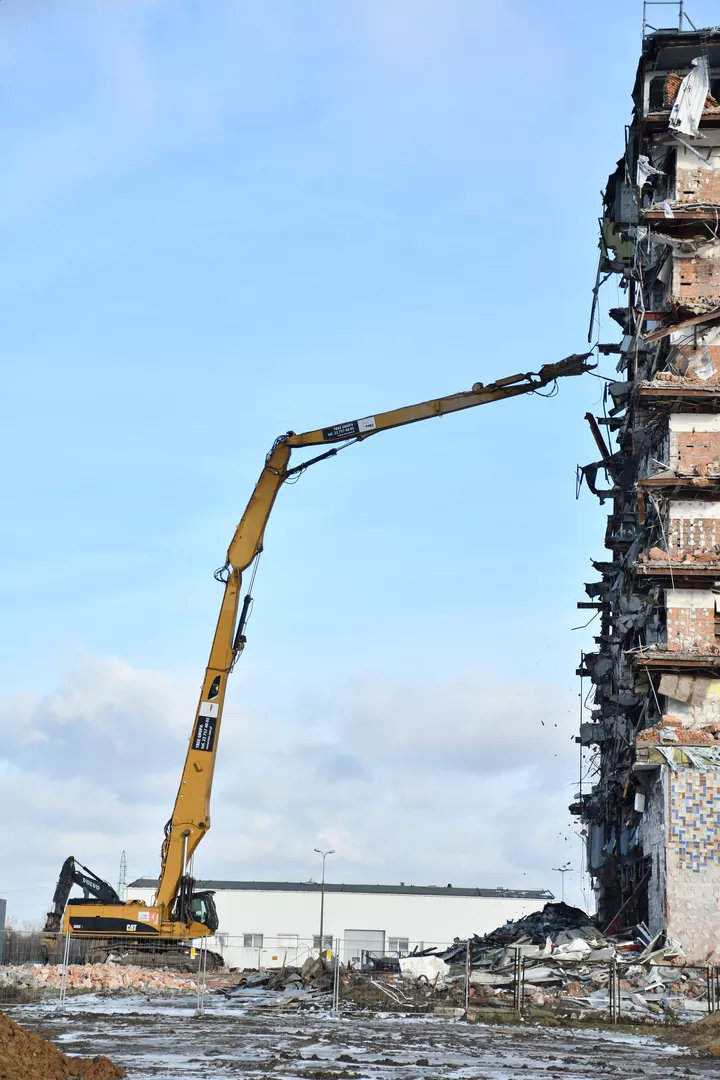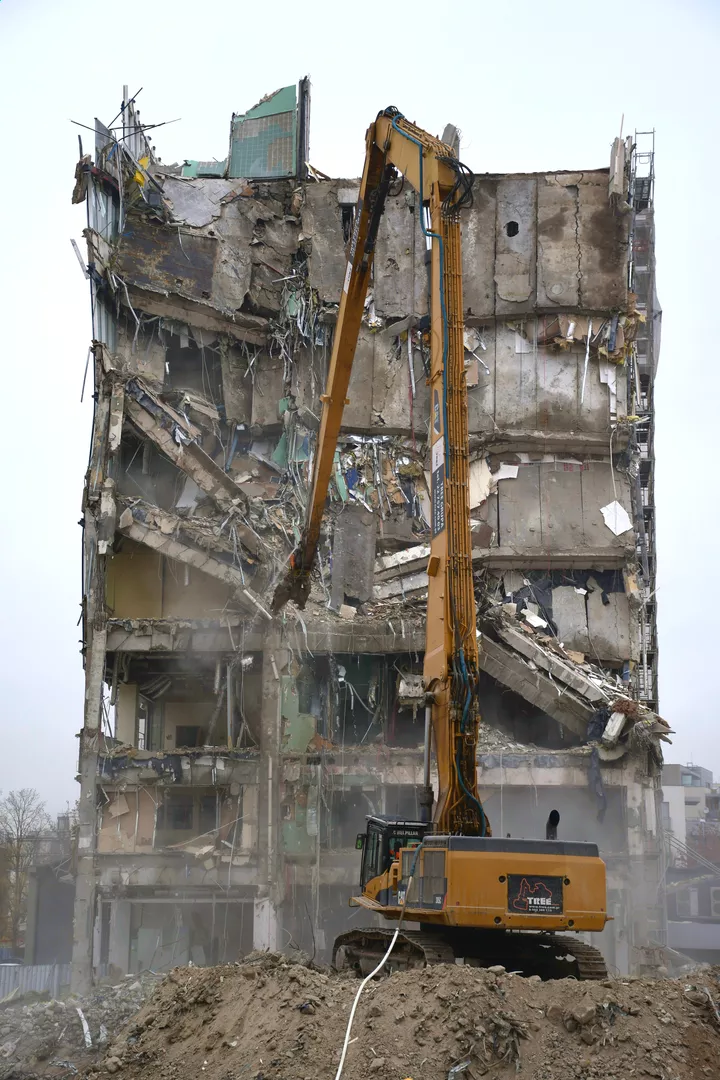
Excavator Operation Manual for Residential Building Demolitions - Operator's Guide 2025
Practical guide for safe excavator operation during residential building demolitions. Contains latest 2025 procedures, legal requirements, and risk minimization techniques for operators.
Excavator Operation Manual for Residential Building Demolitions
Introduction
Residential building demolitions represent one of the most demanding specializations in the construction industry. According to the latest data from 2025, over 800 residential building demolitions are carried out annually in the Warsaw region, making this segment crucial for the city's development.
Legal Requirements and Certificates
New regulations for excavator operators in demolitions have been in effect since January 2025:
- Valid UDT certificate for minimum 2 years
- OSH training in demolition scope (renewable every 3 years)
- Permits for work in urbanized zones
- Knowledge of the Ministry of Development Regulation from 2024
Machine Preparation for Work
Pre-work Inspection
1. Visual inspection of excavator:
- Hydraulic system condition check
- Demolition attachment control
- Safety systems verification
- Communication systems test
2. Attachment control:
- Hydraulic hammer - fastening check
- Concrete shears - cutting test
- Demolition bucket - tooth control
- Demolition grapples - grip strength verification
Safe Demolition Techniques
"Top-down" Method
This is the most commonly used technique for residential buildings up to 4 floors:
Step 1: Roof covering removal Step 2: Roof structure dismantling Step 3: Floor demolition from highest level Step 4: Systematic progression downward
Selective Demolition Technique
According to new 2025 requirements, 70% of materials must be recycled:
- Separate dismantling of metal elements
- Concrete segregation by classes
- Separate collection of ceramic materials
- Special treatment of asbestos elements
Operator Safety
Work Zone
Minimum safety distances (2025):
- 15 meters from neighboring buildings
- 25 meters from power lines
- 10 meters pedestrian zone
- 30 meters when working with hydraulic hammer
Personal Protective Equipment
- Class II protective helmet
- Dust-proof protective glasses
- Protective headphones (min. 25 dB)
- Class 3 reflective clothing
- S3 puncture-resistant footwear
Emergency Procedures
Crisis Situations
1. Structural instability:
- Immediate work stoppage
- 50-meter zone evacuation
- Building constructor notification
- Photographic documentation
2. Installation damage:
- Gas - immediate evacuation, PSG notification
- Electrical - power cutoff, energy company contact
- Water supply - municipal water services notification
Quality Control and Documentation
Required Documentation (2025)
- Demolition work diary
- Safety control protocols
- Waste transfer cards
- Environmental monitoring reports
Parameter Monitoring
Permissible levels:
- Noise: max 85 dB(A) during day, 65 dB(A) at night
- Vibrations: max 3 mm/s for residential buildings
- Dust pollution: max 150 μg/m³ PM10
Cost Optimization
Efficient Planning
- Demolition sequence analysis
- Debris transport route optimization
- On-site recycling planning
- Cooperation with local disposal sites
Work Time Reduction
Average demolition times (2025):
- Single-family house: 1-2 days
- 3-story building: 3-5 days
- Tenement house: 5-8 days
- 4-story apartment block: 7-12 days
New Technologies in 2025
Support Systems
- GPS tracking for route optimization
- Real-time dust monitoring systems
- Mobile documentation applications
- Vibration sensors with alarms
Innovative Equipment
- Noise-reduction hammers (up to 15 dB less)
- Shears with sorting systems
- Concrete pulverizers
- Anti-dust water mist systems
Environmental Aspects
Environmental Protection
New 2025 regulations require:
- 30% CO2 emission reduction
- Minimum 70% material recycling
- Groundwater contamination control
- Site biodiversity monitoring
Summary
Excavator operator work in demolitions requires high qualifications, continuous education, and adherence to rigorous safety procedures. New 2025 regulations set even higher requirements but simultaneously provide opportunities to use modern technologies to increase work efficiency and safety.
Bibliography
## Legal acts and standards:
- Ministry of Development Regulation on work safety in demolitions, Official Journal 2024 item 1456
- PN-EN 1997-1:2025 Eurocode 7: Geotechnical design - Part 1: General rules
- PN-B-06050:2025 Geotechnics - Earthworks - General requirements
## Professional literature:
- Kowalczyk, A. (2025). "Modern demolition techniques in construction", PWN Publishing, Warsaw
- Smith, J., Brown, M. (2024). "Sustainable Demolition Practices in Urban Areas", Construction Technology Review, vol. 45, no. 3
- Nowak, P., Wiśniewski, K. (2025). "Work safety in demolitions - case analysis", Construction Review, no. 2
## Reports and research:
- Central Statistical Office (2025). "Construction in Poland 2024 - demolition sector analysis"
- European Commission (2024). "Waste Management in Construction and Demolition - Best Practices Report"
- Building Research Institute (2025). "Innovations in demolition technologies - research report"
Tags
Share this guide
About the author
Tomasz Kowalski
Construction Equipment Operator at Tree Group
Category
For Operators
Reading time
12 minutes
Publication date
May 29, 2025
Similar guides

Safe Reinforced Concrete Structure Demolition Techniques - Operator's Guide 2025
Comprehensive guide to safe reinforced concrete structure demolition techniques. Current 2025 procedures, structural ass...

Hydraulic Hammer Operation in Demolition Work - Operator's Manual 2025
Detailed guide for safe and efficient hydraulic hammer operation in demolition work. Current 2025 procedures, equipment ...